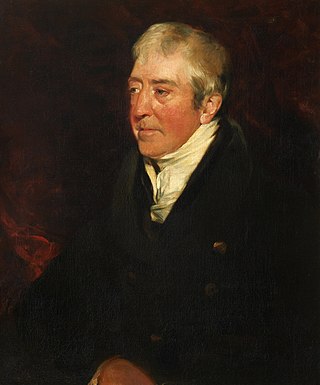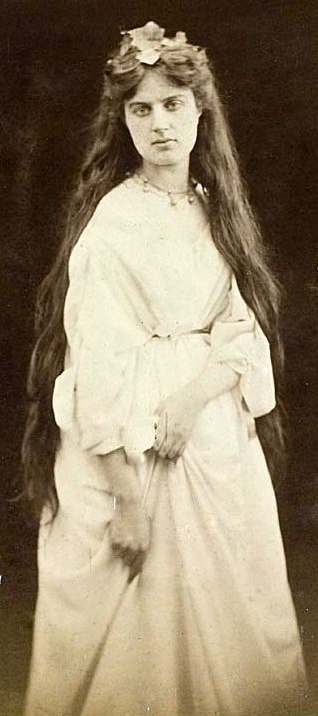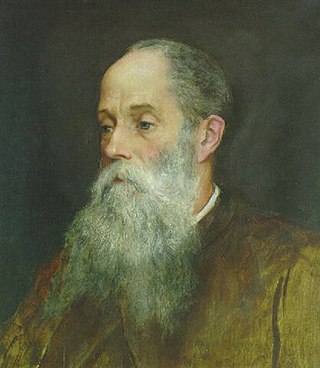
(1883)

Henry Roderick Newman (March 4, 1843 Easton, New York - December 1, 1917, Florence, Italy) [1] was an American landscape and still-life painter, influenced by the Pre-Raphaelite style.


Henry Roderick Newman (March 4, 1843 Easton, New York - December 1, 1917, Florence, Italy) [1] was an American landscape and still-life painter, influenced by the Pre-Raphaelite style.
In 1853, his family moved to New York City. Around 1860 he began studying to become a doctor, like his father but, in his spare time, taught himself to paint.
When his father died, in 1861, he gave up medicine and, at the age of eighteen, declared his intention to become a painter. His mother, naturally displeased, gave him one year to prove that he could support himself that way. In response, he spent six months painting landscapes in Stockbridge, Massachusetts, after which he sent three paintings to the National Academy of Design. [1] From 1864, he was a member of the American, Pre-Raphaelite-inspired, Association for the Advancement of the Cause of Truth in Art.
In 1868, he was attracted to Florida for health reasons and became one of the first well-known American painters to work there, near St. Augustine. In spring 1870 he went to France, where he briefly studied with Jean-Léon Gérôme, but was dissatisfied with his methods. [2] Shortly after the outbreak of the Franco-Prussian War, he moved to Italy, where he lived for the rest of his life.
There, he focused on architectural scenes and floral studies. In 1877, English critic John Ruskin saw his work and suggested subjects for him to paint, some of which he commissioned. Newman was married in 1883 to Englishwoman Mary Watson Willis.
Beginning in 1887 he began spending winters in Egypt, remaining there several months every year. He returned to Egypt nearly every winter for the rest of his life. Most of the works he created on those visits are watercolors of ancient structures, especially of the Temple of Philae, rather than the usual Orientalist scenes. In 1896-1897 he visited Japan, where he did a group of architectural and landscape views.

Sir John Everett Millais, 1st Baronet was an English painter and illustrator who was one of the founders of the Pre-Raphaelite Brotherhood. He was a child prodigy who, aged eleven, became the youngest student to enter the Royal Academy Schools. The Pre-Raphaelite Brotherhood was founded at his family home in London, at 83 Gower Street. Millais became the most famous exponent of the style, his painting Christ in the House of His Parents (1849–50) generating considerable controversy, and he produced a picture that could serve as the embodiment of the historical and naturalist focus of the group, Ophelia, in 1851–52.

The Pre-Raphaelite Brotherhood was a group of English painters, poets, and art critics, founded in 1848 by William Holman Hunt, John Everett Millais, Dante Gabriel Rossetti, William Michael Rossetti, James Collinson, Frederic George Stephens and Thomas Woolner who formed a seven-member "Brotherhood" partly modelled on the Nazarene movement. The Brotherhood was only ever a loose association and their principles were shared by other artists of the time, including Ford Madox Brown, Arthur Hughes and Marie Spartali Stillman. Later followers of the principles of the Brotherhood included Edward Burne-Jones, William Morris and John William Waterhouse.

William Holman Hunt was an English painter and one of the founders of the Pre-Raphaelite Brotherhood. His paintings were notable for their great attention to detail, vivid colour, and elaborate symbolism. These features were influenced by the writings of John Ruskin and Thomas Carlyle, according to whom the world itself should be read as a system of visual signs. For Hunt it was the duty of the artist to reveal the correspondence between sign and fact. Of all the members of the Pre-Raphaelite Brotherhood, Hunt remained most true to their ideals throughout his career. He was always keen to maximise the popular appeal and public visibility of his works.

Alexander Nasmyth was a Scottish portrait and landscape painter, a pupil of Allan Ramsay. He also undertook several architectural commissions.
Thomas Seddon was an English landscape painter associated with the Pre-Raphaelite movement, who painted colourful and highly detailed scenes of Brittany, Egypt, and Jerusalem.

John Frederick Lewis (1804–1876) was an English Orientalist painter. He specialized in Oriental and Mediterranean scenes in detailed watercolour or oils, very often repeating the same composition in a version in each medium. He lived for several years in a traditional mansion in Cairo, and after his return to England in 1851 he specialized in highly detailed works showing both realistic genre scenes of Middle Eastern life and more idealized scenes in upper-class Egyptian interiors with little apparent Western influence.

Henry Farrer was an English-born American artist known for his tonalist watercolor landscapes and etchings.

Marie Stillman was a British member of the second generation of the Pre-Raphaelite Brotherhood. Of the Pre-Raphaelites, she had one of the longest-running careers, spanning sixty years and producing over one hundred and fifty works. Though her work with the Brotherhood began as a favourite model, she soon trained and became a respected painter, earning praise from Dante Gabriel Rossetti and others.

Joseph Edward Southall RWS NEAC RBSA was an English painter associated with the Arts and Crafts movement.

John Brett was a British artist associated with the Pre-Raphaelite movement, mainly notable for his highly detailed landscapes.

John Roddam Spencer Stanhope was an English artist associated with Edward Burne-Jones and George Frederic Watts and often regarded as a second-wave pre-Raphaelite. His work is also studied within the context of Aestheticism and British Symbolism. As a painter, Stanhope worked in oil, watercolor, fresco, tempera, and mixed media. His subject matter was mythological, allegorical, biblical, and contemporary. Stanhope was born in Cawthorne, near Barnsley, Yorkshire, England, and died in Florence, Italy. He was the uncle and teacher of the painter Evelyn De Morgan and encouraged then unknown local artist Abel Hold to exhibit at the Royal Academy, which he did 16 times.

The Scapegoat (1854–1856) is a painting by William Holman Hunt which depicts the "scapegoat" described in the Book of Leviticus. On the Day of Atonement, a goat would have its horns wrapped with a red cloth – representing the sins of the community – and be driven off.

John William Hill or often J.W. Hill was a British-born American artist working in watercolor, gouache, lithography, and engraving. Hill's work focused primarily upon natural subjects including landscapes, still lifes, and ornithological and zoological subjects. In the 1850s, influenced by John Ruskin and Hill's association with American followers of the Pre-Raphaelite Brotherhood, his attention turned from technical illustration toward still life and landscape.

Albert Goodwin (1845–1932) was a British landscapist specialising in watercolours. His work shows the influences of Turner and the Pre-Raphaelite Brotherhood. Goodwin was born in Maidstone in Kent, the son of a builder and one of 9 children. After leaving school he became an apprentice draper. His exceptional artistic ability was recognised at an early age and he went on to study with the Pre-Raphaelite artists Arthur Hughes and Ford Madox Brown - the latter predicting that he would become "one of the greatest landscape painters of the age".

Jane Eleanor Benham Hay was an English Victorian painter and illustrator. She was loosely associated with two important artistic movements of the mid-19th century: the Pre-Raphaelite painters of Britain and the Macchiaioli of Italy.

Joanna Mary Boyce was a British painter associated with the Pre-Raphaelite Brotherhood. She is also known by her married name as Mrs. H.T. Wells, or as Joanna Mary Wells. She produced multiple works with historical themes, as well as portraits and sketches, and authored art criticism responding to her contemporaries. She was the sister of Pre-Raphaelite watercolourist George Price Boyce.

Scottish art in the nineteenth century is the body of visual art made in Scotland, by Scots, or about Scottish subjects. This period saw the increasing professionalisation and organisation of art in Scotland. Major institutions founded in this period included the Institution for the Encouragement of the Fine Arts in Scotland, the Royal Scottish Academy of Art, the National Gallery of Scotland, the Scottish National Portrait Gallery and the Glasgow Institute. Art education in Edinburgh focused on the Trustees Drawing Academy of Edinburgh. Glasgow School of Art was founded in 1845 and Grays School of Art in Aberdeen in 1885.

Victorian painting refers to the distinctive styles of painting in the United Kingdom during the reign of Queen Victoria (1837–1901). Victoria's early reign was characterised by rapid industrial development and social and political change, which made the United Kingdom one of the most powerful and advanced nations in the world. Painting in the early years of her reign was dominated by the Royal Academy of Arts and by the theories of its first president, Joshua Reynolds. Reynolds and the academy were strongly influenced by the Italian Renaissance painter Raphael, and believed that it was the role of an artist to make the subject of their work appear as noble and idealised as possible. This had proved a successful approach for artists in the pre-industrial period, where the main subjects of artistic commissions were portraits of the nobility and military and historical scenes. By the time of Victoria's accession to the throne, this approach was coming to be seen as stale and outdated. The rise of the wealthy middle class had changed the art market, and a generation who had grown up in an industrial age believed in the importance of accuracy and attention to detail, and that the role of art was to reflect the world, not to idealise it.

Charles Herbert Moore was an American university professor, painter, and architectural historian, known as the first director of Harvard University's Fogg Art Museum. He was one of many followers of the works of John Ruskin, and was known as an American Pre-Raphaelite. In 1871, Moore left painting to begin teaching at Harvard, where he led its new art department. There, Moore was among the first art historians at an academic institution in the United States. After retirement, Moore moved to Hampshire, England where he wrote many books on medieval and Renaissance architecture. He died in Hampshire in 1930.

The American Pre-Raphaelites was a movement of landscape painters in the United States during the mid-19th century. It was named for its connection to the Pre-Raphaelite Brotherhood and for the influence of John Ruskin on its members. Painter Thomas Charles Farrer led the movement, and many members were active abolitionists. Their work together was short-lived, and the movement had mostly dissolved by 1870.